Beta vulgaris subsp. vulgaris, (Cicla and Flavescens Groups)
Swiss chard, B. vulgaris, is a type of beet. But instead of featuring a well-developed and flavorful root, its claim to fame is glossy puckered leaves veined with bright white, orange, magenta, red, or yellow, with firm stalks to match.

We link to vendors to help you find relevant products. If you buy from one of our links, we may earn a commission.
Think spinach meets celery under neon lights, and you have a pretty good description of this colorful and nutritious vegetable. Read on for all you need to know to grow it in your garden!
What You’ll Learn
Cultivation and History
Swiss chard is a biennial that grows as an annual in all temperate zones. It’s hardy to approximately 15°F, but while it does best in cool temperatures, it can tolerate heat with adequate watering.
Successful cultivation requires a location that gets full sun to part shade, with soil that is organically rich and well-draining. To determine your soil’s characteristics, conduct a soil test.
The ideal pH range is between 6.0 and 8.0, slightly more acidic than for beets.
Also, they note that chard is not “day-length sensitive,” a botanical phenomenon called “photoperiodism.” This is why it’s less prone to bolting, or prematurely setting seed, than other leafy greens like spinach and lettuce.
And while annual chard in colder climates sets no seed, plants in warmer regions set seed in the second year. When they do, the leaves are no longer tasty.
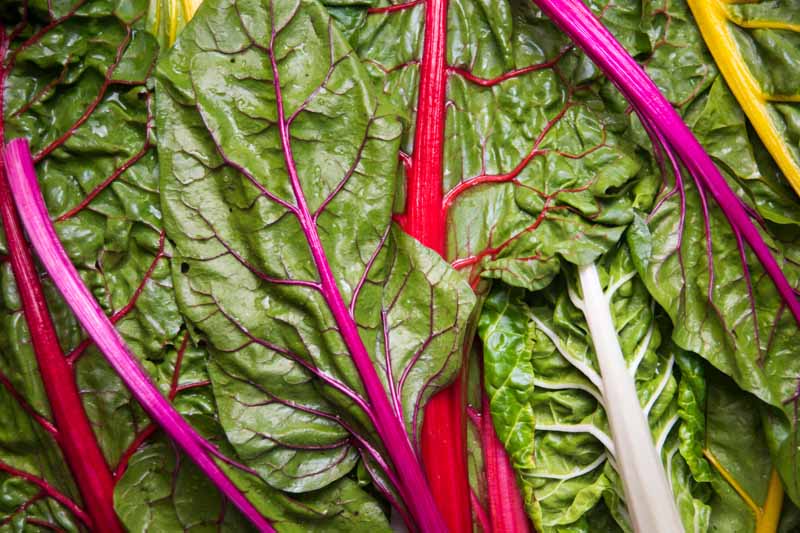
In addition to growing it for consumption, B. vulgaris is often cultivated as an ornamental. With its glossy leaves and vivid, multi-colored stems, it makes an eye-catching focal point in beds, borders, and containers, especially in the autumn garden, as the last blossoms of summer fade.
And whether you grow it to eat or just to look at, this cut-and-come-again vegetable should have its leaves snipped frequently to encourage further leaf formation throughout the growing season.
Leafy B. vulgaris is also known as leafy beet, mangold, perpetual spinach, seakale beet, and silver beet.
“Chard” is from the French “carde,” from the Vulgar Latin “carda,” and the Latin “carduus.” It means “cardoon,” which is the artichoke thistle, Cynara cardunculus.
Chard is a “cultivated descendant” of the sea beet, B. vulgaris subsp. maritima, and the first varieties have been traced to Sicily. The word “Swiss” was added by the 19th century to help seed catalog shoppers differentiate chard from French spinach.
Propagation
B. vulgaris grows from irregularly-shaped seed clusters that contain several seeds in each.

You may find it listed for sale as “decorticated” or “pelletized,” meaning the rough edges have been made smooth, so it passes more easily through seeding tools.
How to Grow
When selecting varieties to plant, consult seed packets for information on mature dimensions, to plan your beds or containers appropriately.
In my region of the Northeast, folks sow chard just before the last frost, and sometimes several more times until mid-summer. If you’re fortunate to live where the ground doesn’t freeze hard, you may also plant again in the fall. B. vulgaris germinates in 50°F soil, and may struggle with temperatures that exceed 80°F.
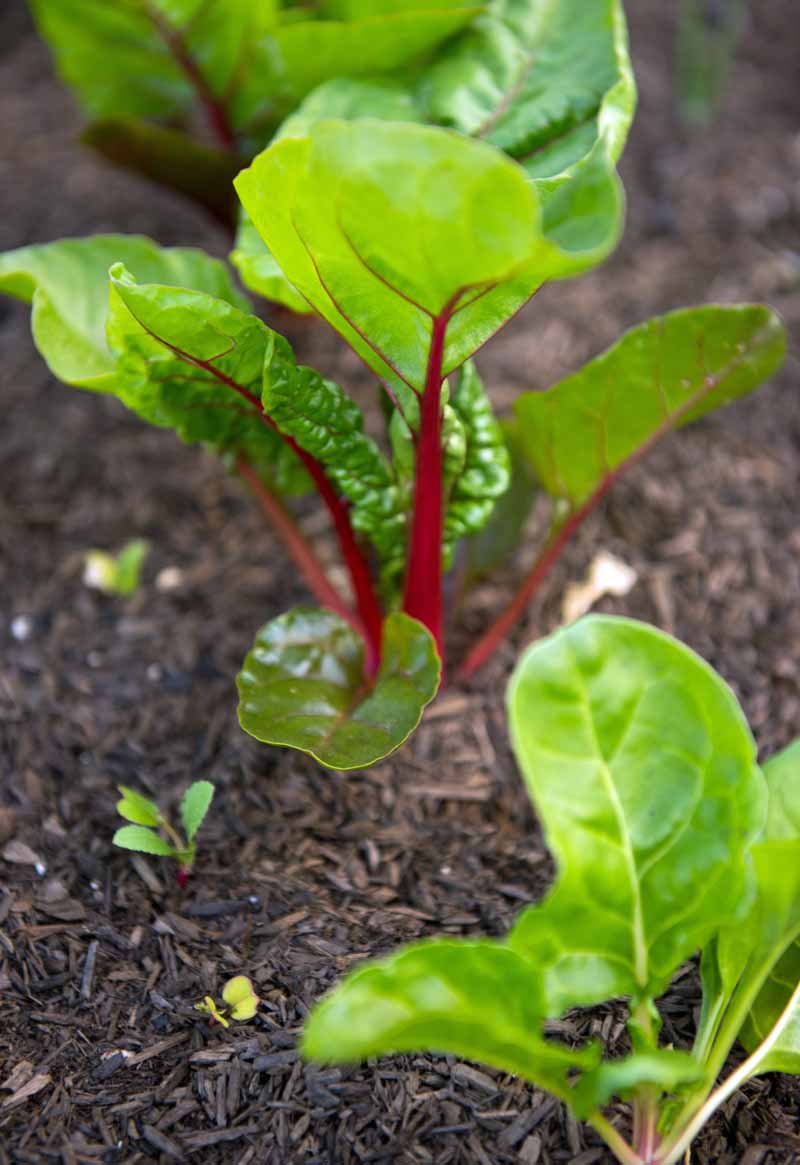
Since its seeds come several to a pod, so you’ll have little clusters of seedlings that need to be thinned out before transplanting. Keep the sturdiest and rinse and enjoy the rest as nutritious microgreens.
Start seeds indoors three to four weeks before the last frost date, or direct sowing two weeks before this date. Seedlings may be placed outside just after the last frost date has passed.
For those in warmer regions, she says to direct sow seeds about 10 weeks before the first frost date. Place seedlings outside at four weeks old.
Sow seed in organically-rich soil supplemented by compost and/or fertilizer as needed. A soil test is your best indicator of what’s required. Leafy vegetables benefit from nitrogen supplementation, so consider a well-balanced, slow-release fertilizer if you decide to forgo the test.
At the recommended time, harden-off your seedlings. Acclimate them to the outdoors for a couple of hours each day for several days prior to transplanting them into the garden or containers.
If you choose to pot them, provide containers with good drainage holes and a depth of at least 12 inches. Choose a smaller-stature variety, and trim leaves as soon as they reach six inches, to encourage more leaf than root growth.
For garden plants, you may cut leaves at heights from six inches to two feet, depending upon plant size. The smaller the leaf and stalk, the more tender the texture. In addition, leaving mature leaves unharvested may result in more root growth and fewer new leaves.
Prepare your garden soil to a depth of about 12 inches, working in any recommended amendments, and fertilizing if you so choose.
Place one seedling every 12 inches, leaving about 18 inches between rows. Water and maintain even moisture, never allowing the soil to completely dry out during the plants’ acclimation to their new location.
Some folks like to grow “baby greens,” meaning they like to harvest them at a height of at least six inches tall. If this is your plan, consider planting much closer together, about six inches, to get more leaves little leaves per square foot.
Once established, plants need an inch or so of water throughout the growing season. Supplement in the absence of rain, or plants will slow leaf production until moisture is restored.
Companion Plants
Good “companions” are those with similar sun, soil, and water needs that don’t attract pests and diseases that would have an adverse effect on your vegetable.
Good choices for sharing space with B. vulgaris are members of the brassicas and cole crops, like broccoli, Brussels sprouts, radishes, and cabbage.

Other excellent companions include chamomile, coreopsis, lettuce, mint, nasturtium, and sweet alyssum.
Companion plants like sweet alyssum and chamomile attract pollinators, some of whom feed on the pests that may be attracted to Swiss chard. In addition, having refreshing birdbaths and welcoming birdhouses attract feathered friends that also feed on insect pests.
Avoid planting corn; cucurbits like cucumber, melon, and pumpkin; and potatoes nearby for the reasons stated above.
Read more about companion plants for chard here.
Growing Tips:
- Avoid companions that compete for water and attract pests and diseases to which chard may become vulnerable.
- Harvest often to encourage new leaf formation.
- Maintain adequate moisture.
- Plant multiple times for successive crops.
- Space according to planned use as “baby greens” or full-size leaves.
Cultivars to Select
When shopping for seed, you’ll come across an array of cultivars. There are glossy, puckered leaves in shades of green and deep red, with ribs and veins in a rainbow of hues that includes magenta, orange, purple, red, white, and yellow.
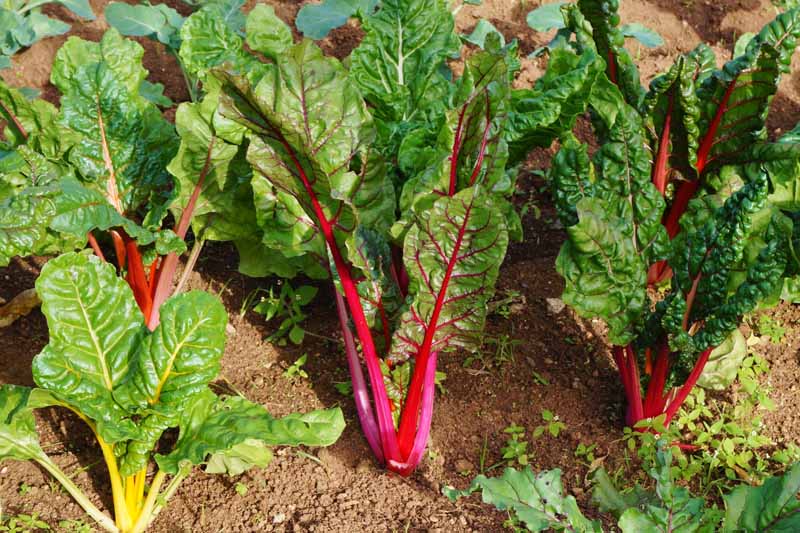
By the way, there’s no cultivar called “Rainbow Chard.” Merchants simply mix different cultivars to achieve a multi-colored bunch for sale.
Some exceptional varieties to look for are:
Bright Lights
Expect multi-colored solid and striped stems, as well as both deep red and green leaves with this variety.
It matures to a height of up to 20 inches tall.
You can find seeds available at True Leaf Market.
Fordhook
Light green leaves and white stems characterize this type.
The standard cultivar has a smaller stature, with stalks from 8 to 10 inches tall, making it a perfect container gardening choice.
Fordhook Giant
A larger version of ‘Fordhook,’ this cultivar tops out at 24 inches.
You can find seeds available at Burpee.
Lucullus
If you’re looking for a variety prized not only for its flavor, but its exceptional heat and cold tolerance, white-ribbed, light green-leaved ‘Lucullus’ may be the one.
It reaches a height of up to 24 inches, and often winters over, for an early spring crop.
You can find seeds at True Leaf Market.
Orange Fantasia
Billed as “bolt-resistant,” this beauty has bright orange stems and dark green leaves.

Stalks are 8 to 10 inches tall, making it suitable for a small container garden.
Ruby
With its abundant bright red stems and dark green leaves, ‘Ruby’ makes a pretty ornamental as well as an edible in the summer through fall landscape.
Often called “Rhubarb Chard,” this kind may kind may reach a height of 24 inches.
Managing Pests and Disease
Chard is not prone to insects or disease. The best way to avoid both is to follow the recommended planting suggestions. With nutrient-rich soil, good drainage, adequate aeration between vegetables, and a minimum of weeds, you’re well on your way to success.
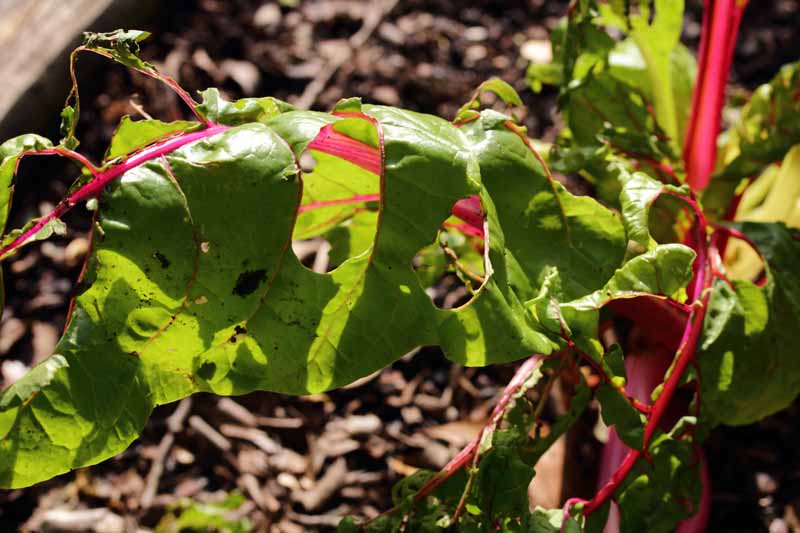
It’s also wise to rotate crops and not co-plant with spinach or beets, to inhibit insects specific to this botanical group, such as the beet leafhopper, that winter over in the soil and live their lives on these plants, as well as chard.
Even with the best intentions, during the growing season, you may have to deal with hungry critters, bugs, and infection, so here’s what to watch for and how to handle each.
Herbivores
Animals such as deer, ground hogs, and rabbits may come a-nibbling, so consider planting in raised beds, and beneath floating row covers, to keep them at bay. In addition, chicken-wire or deer fencing may help.
Insects
If plants become targets due to poor soil, drainage, spacing, or weed control, you may encounter the following:
- Aphid
- Beet Leafhopper
- Blister Beetle
- Flea Beetle
- Leafminer
- Slug
- Tarnished plant bug
Insects are a two-fold menace. First, they carry diseases that they spread with each voracious bite of plant tissue. And second, they may make your vegetable their home, laying eggs, nourishing ravenous appetites, causing damage or death, and wintering over to do it all again next year.
(This is one reason for crop rotation, another is soil depletion. Consult our article on cover cropping for more information on this subject.)
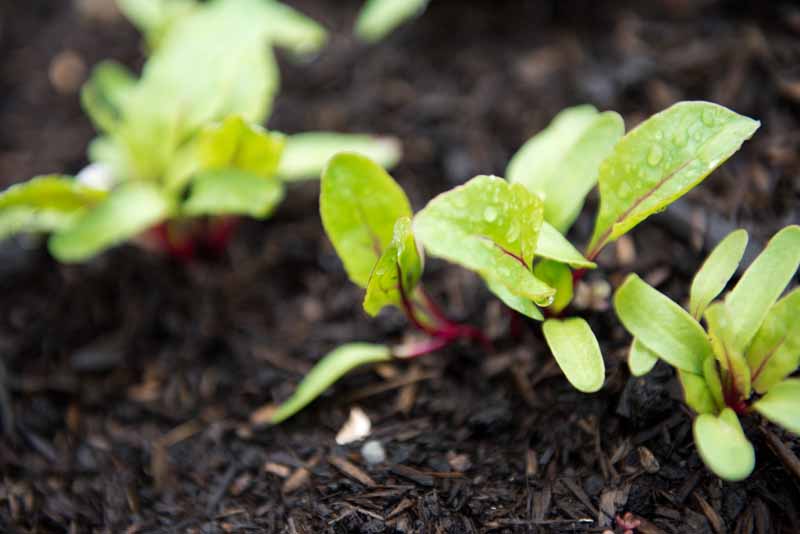
Floating row covers are your best bet for avoidance. In addition, a soil-level application of food grade diatomaceous earth is an excellent deterrent. And if you see bugs and eggs on your plants, hand pick them, or dislodge them with a steady stream of water from your garden hose.
Weeds like lamb’s quarters and pigweed are in the same botanical family as B. vulgaris. They attract leafminers and their seedlings closely resemble those of chard, so weed well and with caution!
Find more tips on identifying and controlling pests that affect chard plants here.
Disease
While not prone to disease, conditions like over- or under-watering may make it susceptible, resulting in damaged plant tissue and growth deformity.
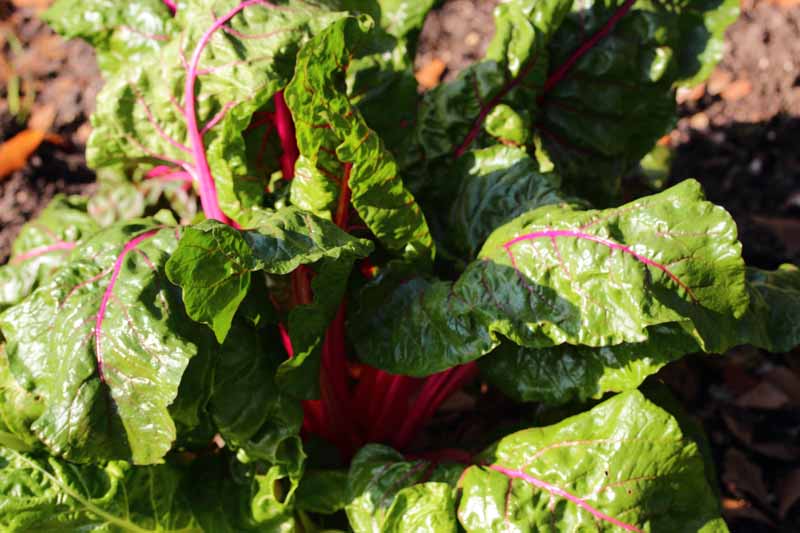
It does tolerate humidity, but B. vulgaris that is planted too closely, or in soil that doesn’t drain well, or both, may succumb to:
- Curly top disease, that affects leaves and roots and is spread by the beet leafhopper.
- Fungal conditions, such as downy mildew, powdery mildew, Cercospora leaf spot, and seedling blight (damping off in the seedling stage).
- Root rot, from soil oversaturation, a condition attractive to slugs.
The beet leafhopper loves sunny locations, so planting in partial shade my deter this virus-carrying pest. An organic fungicide may halt the spread of fungus, but roots that succumb to oversaturation don’t usually recover.
Remove any leaves that are damaged by animals, insects, or disease, and discard them.
Read our full guide on chard disease identification and control here.
Harvesting
This vegetable is a cut-and-come-again species that provides multiple harvests during the growing season. You may be able to cut your first tender leaves as early as late spring. Harvesting stalks when they are young and tender, at about six inches tall, is an excellent way to get the maximum number of harvests per year.
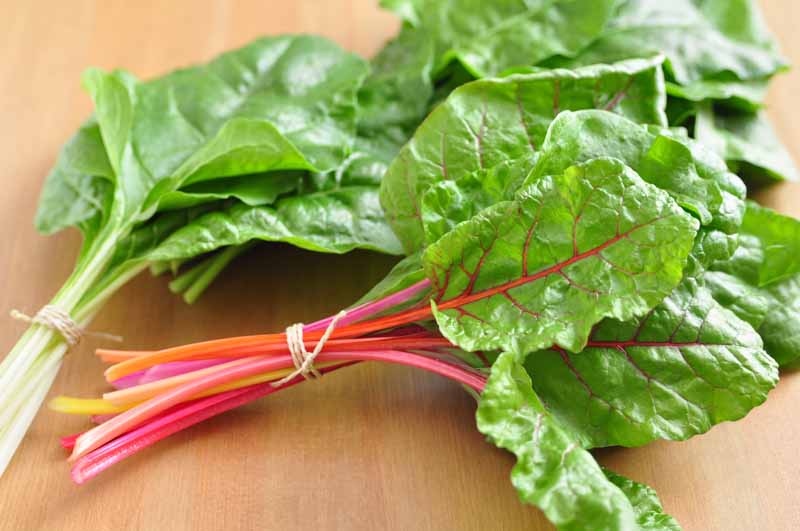
The best time to pick vegetables is during the cool morning or evening hours.
When harvesting both young and older leaves, always take the outer leaves first, leaving the younger, inner ones to continue to grow. Make clean cuts across each stem about an inch above the base of the plant.
As fall draws to a close, and light frosts begin, you may dig up your plants, roots and all. If you keep some soil attached, you may store them in a cool, moist location for continued growth and harvests into the winter.
Alternatively, cut individual stems, or shear off the entire plant at the soil level, for one final harvest of the season.
Another way to optimize your crop output is to use floating row covers to retain warmth right into winter.
Get more information on harvesting Swiss chard here.
Seed Saving
If you’re growing as an annual, your plants won’t go to seed. However, if your plants winter over and return the following spring, you may have the pleasure of seeing tiny green flowers set seed at the end of the second growing season.
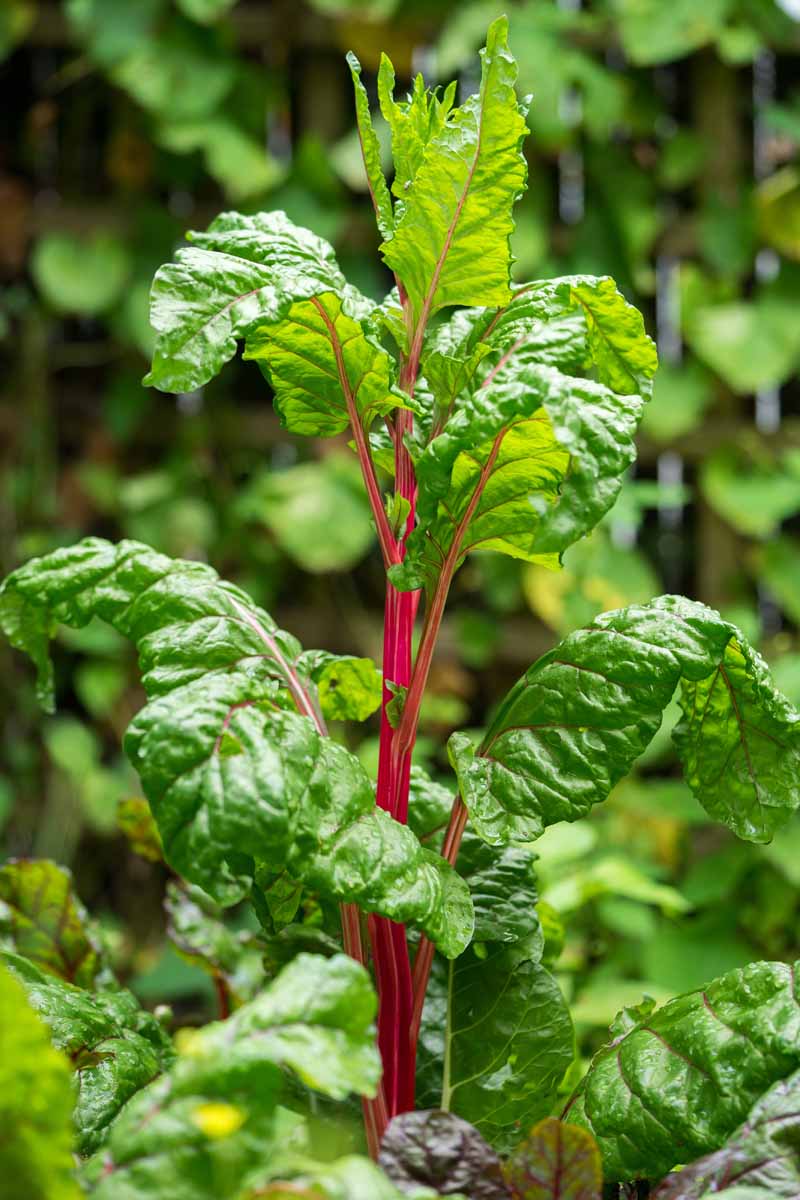
Once you see this, the leaves will start to taste bitter, and it’s time to watch for seed pod formation.
When most of the pods look brown, remove entire stalks of them and lay them in open paper bags in a dry location.
Give them a week or two, and then rub your fingers down each stalk to release the thoroughly dry seed clusters. Separate them from the chaff and store them in jars, or zippered plastic bags, in a cool, dry location. Seeds should remain viable for five years.
Preserving
Rinse all leaves and stems before storage to rid them of debris and insects, and pat dry.
Harvested leaves stay fresh for about three days in the fridge. If you put it them in a zippered plastic bag with a damp paper towel, maybe a week.
To make the most of a large crop, you may blanch, cool, and freeze leaves for up to a year.
You can freeze leaves raw or dry them to use as you would parsley flakes. You can even pickle the stalks.
Chard is an excellent source of copper, iron, magnesium, manganese, and potassium, and vitamins A, C, and K. The most colorful varieties offer anti-inflammatory betalains.
And please note: chard contains oxalic acid, so consume it in moderation if you have been advised to monitor your oxalate intake for optimal kidney health.
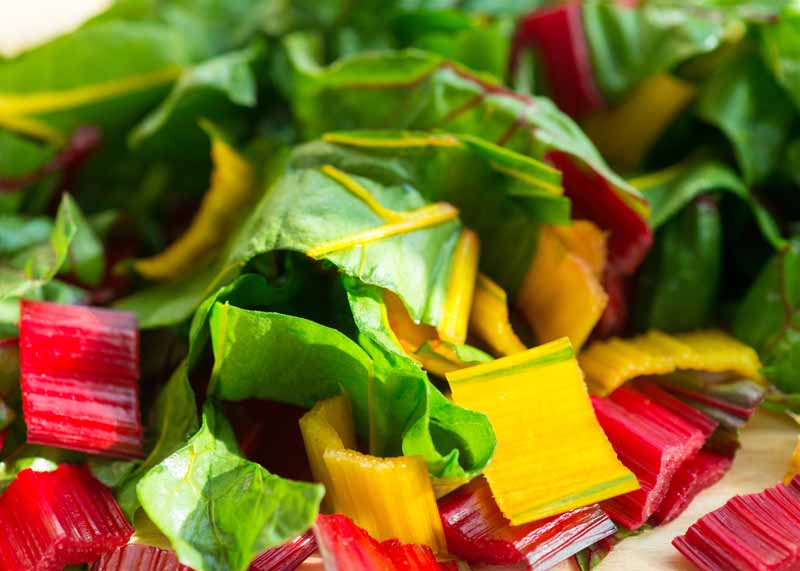
You may enjoy the leaves and stems cooked or uncooked, together or separately. Like many greens, chard has a slightly bitter flavor that grows mild and savory during cooking.
When preparing it, consider cutting up the leaves and stalks separately. This way, you may remove cooked leaves and allow the somewhat tougher stems to continue on until tender. Cooking is the best way to use older leaves.
Young leaves are excellent when lightly wilted in sautés. And more mature leaves make a refreshing and colorful alternative to lettuce and celery, when cut up separately in salads.
Quick Reference Growing Chart
| Plant Type: | Annual or biennial vegetable | Water Needs: | 1 inch per week |
| Native to: | Sicily, naturalized in Europe and the Americas | Maintenance: | Low |
| Hardiness (USDA Zone): | Annual 2-11, biennial 6-11 | Soil Type: | Rich, organic |
| Season: | Spring to hard frost | Soil pH: | 6.0-8.0 |
| Exposure: | Full sun to part shade | Soil Drainage: | Well-draining |
| Time to Maturity: | 50-60 days | Companion Planting: | Brassicas, celery, chamomile, coreopsis, lettuce, mint, nasturtium, radishes, sweet alyssum |
| Spacing: | 12 inches | Avoid Planting With: | Other subspecies of B. vulgaris (beetroot, sugar beet), corn, cucurbits, most herbs, potatoes |
| Planting Depth: | 1/2 inch | Family: | Amaranthaceae |
| Height: | 8-24 inches | Subfamily: | Chenopodiaceae |
| Spread: | 9-18 inches | Genus: | Beta |
| Tolerance: | Cold, heat with adequate watering, light frost | Species: | vulgaris |
| Pests & Diseases: | Aphids, beet leafhoppers, blister beetles, flea beetles, leafminers, slugs, tarnished plant bug; curly leaf fungus, root rot | Subspecies and Cultivars: | subsp. vulgaris, (Cicla and Flavescens groups) |
Recipes and Cooking Ideas
Here are some recipes to show off your homegrown chard:
Carrot, Rainbow Chard and Red Potato Daal with Seared Chicken Breasts
Try this Indian Daal with Seared Chicken Breasts for an aromatic dish fortified with the anti-inflammatory benefits of golden turmeric.

Find the recipe on our sister site, Foodal.
Cauliflower and Chard Fritters with Spicy Yogurt Cilantro Sauce
If you’re looking for a quick prep brunch dish that’s a little out of the box, loaded with vegan nutrition, and packs a cayenne zing, serve your guests this tasty fritter that can be either a main entree, an appetizer, or a side.

Easy enough to make for a quick lunch!
French Lentil Soup with Spices and Chard
And what’s a comforting warmer-upper that’s so good you’ll even want it in the summer?
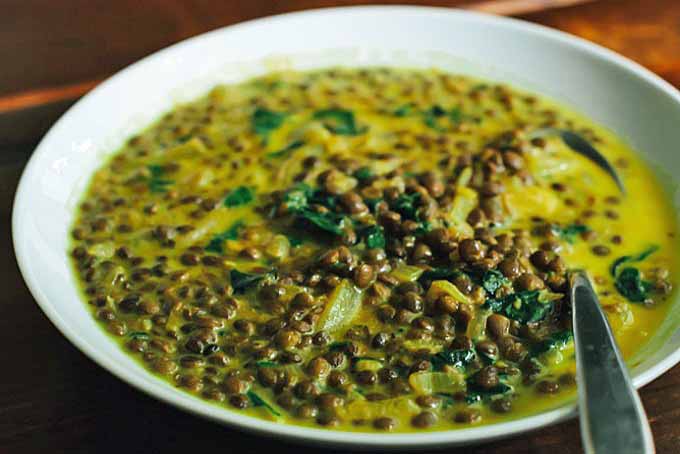
Why, cardamom-infused French lentil soup, of course. Take the vegan option and make it with coconut milk for an even richer, sweeter experience.
Sautéed Swiss Chard with Caramelized Onions, Almonds and Raisins
With your abundant harvest, you’ll find this dish is your new go-to-choice for impromptu get-togethers.
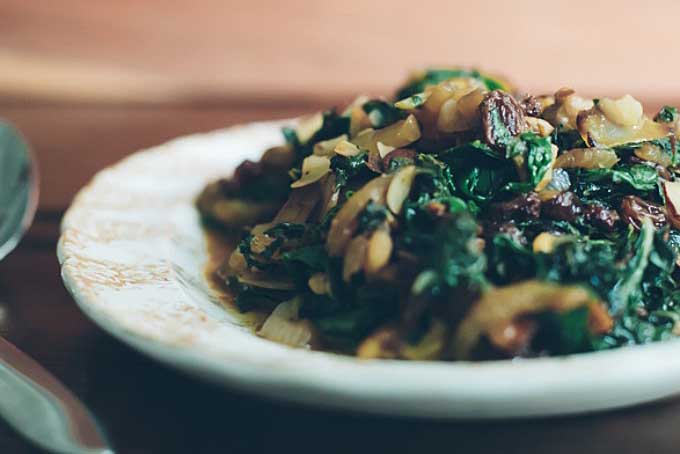
The pairing of gently wilted greens and tender onions with crisp nuts and chewy raisins is a textural feast for the palate that always satisfies.
And for More Ideas…
If you use the leaves for a recipe and have stems leftover, consider them a vegetable in their own right, and prepare them separately.
They make an excellent substitution for asparagus, removing its earthy high note and replacing it with sweetness.
In addition to the leaves and stalks, the “crown” where the stalks originate is also edible and may be chopped up and added to soups and stews. To enjoy it at season’s end, simply dig up the entire plant, slice off the roots, rinse and prepare.
Garden to Table
Are you ready to grow nutritious leafy chard with its multicolor stems in your garden this year?
Eating a variety of colorful vegetables is one way to up your nutritional game, and the best ones are the ones you grow yourself.
Experience the joy of fresh-from-the-garden chard!
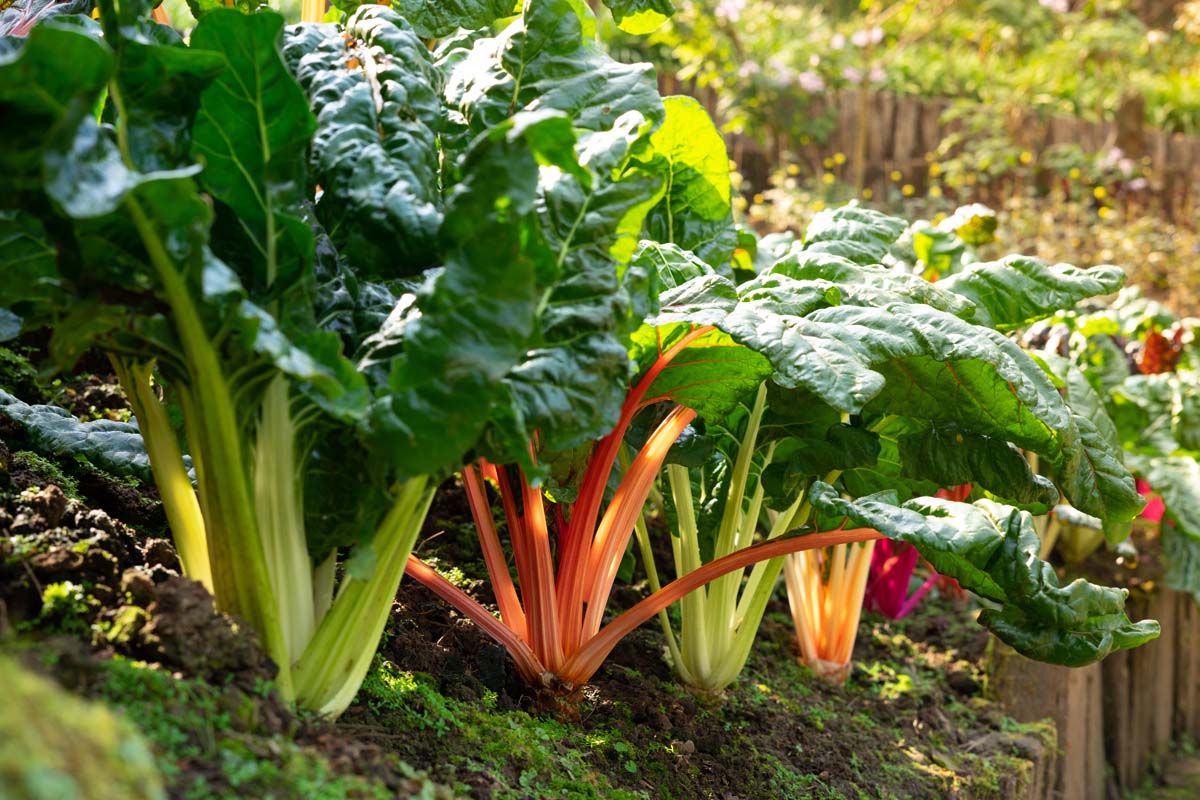
Tell us all about your experiences with chard in the comments section below.
Looking for some more leafy greens to add to your garden? Check out these growing guides:

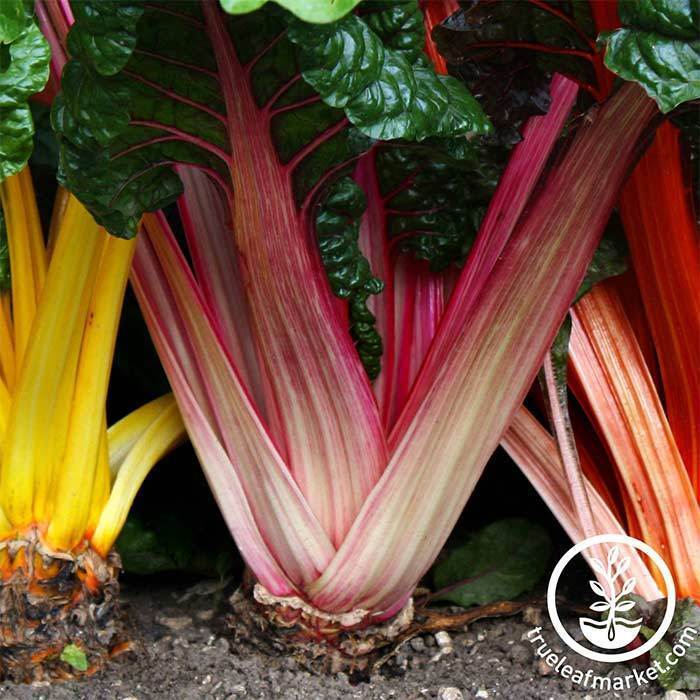
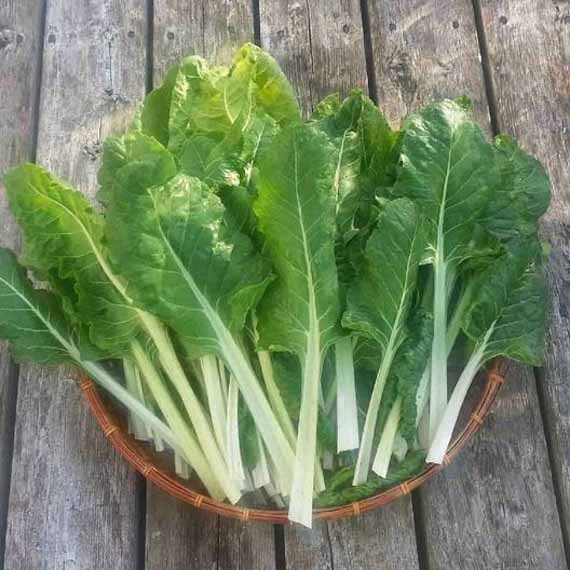
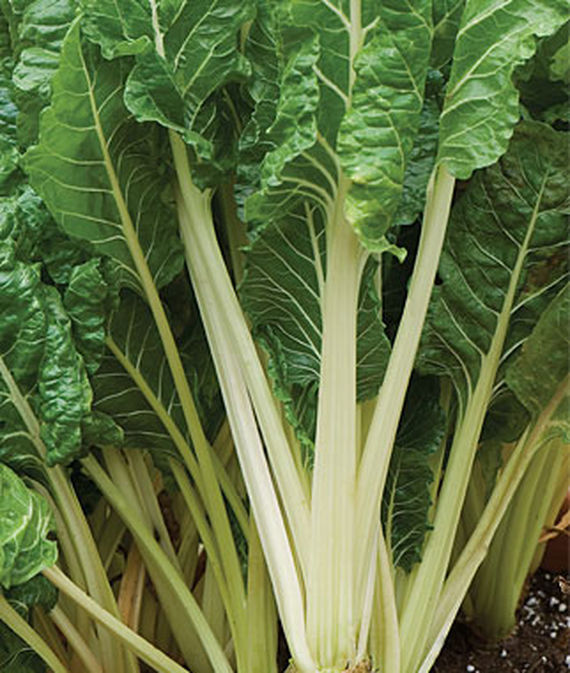
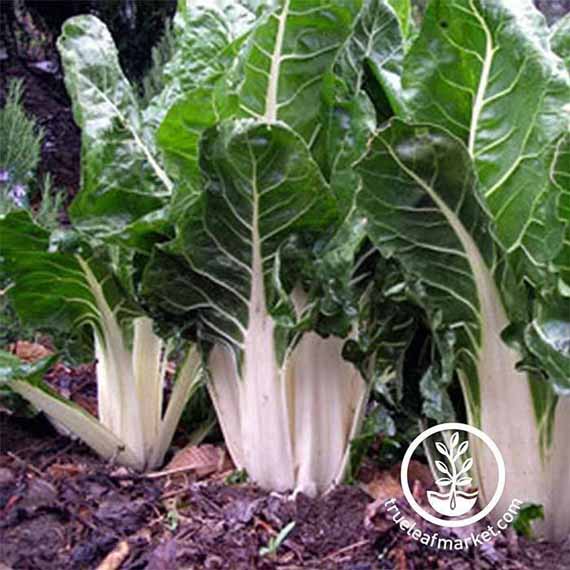
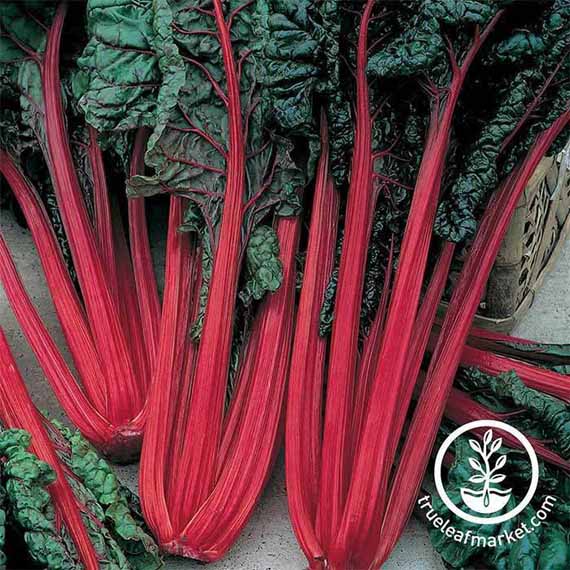
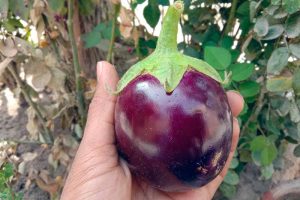
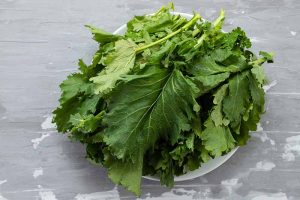
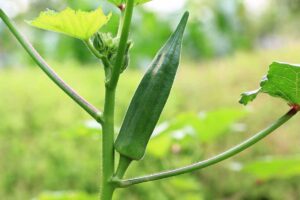
Thank you for sharing all the info about Swiss Chard! I have never grown it before and picked up some “Bright Lights” at my local grower and wanted to give them a try. The article covered a very good overview of what I needed to know to get started and some recipes as a bonus (1 stop “shopping” for information)!
How to grow chard: Put seeds in ground. Water.
That pretty much covers the basics! You forgot the next crucial step though: wait.